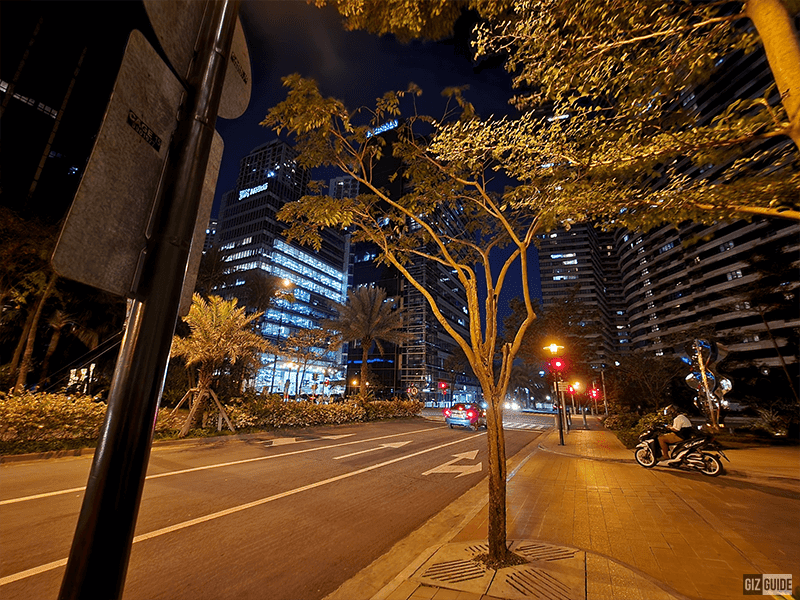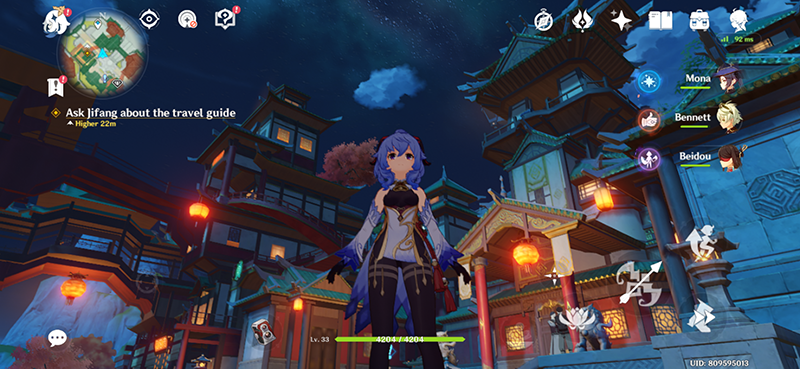.gif)
We share our thoughts and experiences with the Samsung Galaxy S22+ 5G after three weeks of use.
 |
| Samsung Galaxy S22+ |
Launched in early 2022, the new Samsung Galaxy S22+ features several key changes that we think make it the better value variant of the S22 series.
Before we get to why we think this is so, let's recap its key specs. It features an FHD+ Dynamic AMOLED 2X display with a 120Hz refresh rate and a 240Hz touch sampling rate. Inside is the 4nm Qualcomm Snapdragon 8 Gen 1 5G octa-core processor, 8GB RAM, 128GB/256GB of storage, and a large 4,500mAh battery with up to 45W Super Fast Charging 2.0.
At the back of the phone are the 50MP f/1.8 main camera, 12MP f/2.2 ultra-wide camera, and 10MP 3x telephoto camera with an LED flash. While in front is the 10MP f/2.2 selfie camera.
It is IP68 water and dust resistance rated and features a metal and glass design. No more glasstic back like in the S21.
In the Philippines, the starting price of the S22+ is priced at PHP 56,990 for the 8GB/128GB model.
How does it perform in real life?
Let's find out!
Unboxing/Accessories
 |
| Black Box |
We already shared our thoughts on the build and design of the S22 and S22+ in our first impressions. We only got to see the phone itself at that time but now we received the phone and the retail packaging.
It comes in a black box with the Galaxy S22+ branding. The S is the same color as the phone.
 |
| Box inclusions |
Inside the box is the Galaxy S22+, USB-C to USB-C cable, documentation, and the SIM ejector tool. There is no power brick, earphones, or a case inside the box.
Multimedia Experience
 |
| Display |
In front of the Galaxy S22+ is a flat 6.6-inch Dynamic AMOLED 2X display with a 2340 x 1080 resolution, a 120Hz refresh rate, and a 240Hz touch sampling rate.
As expected, the display is bright with a peak brightness of more than 1000 nits. This results in accurate colors that pop while offering nearly true blacks because of the AMOLED panel. Even though it is just at 1080 for a 6.6-inch panel, the images and text are sharp and crisp.
At first, we wondered if 1080p will be enough for a 6.6-inch panel. After a day, we got used to it and we didn't even notice as the images and text remain crisp. It would be great if Samsung would eventually switch to a 1440p panel.
The adaptive 120Hz refresh rate and 240hz touch sampling rate also make interacting with the phone a buttery-smooth visual and tactile experience. This includes opening apps, navigating thru the OS, playing games, and the like.
 |
| Stereo speakers |
The phone features a stereo that is split between the earpiece and the bottom-firing speaker. It does not have a 3.5mm audio jack.
The speakers have a loud maximum volume with powerful sound. Even at maximum volume, there is a little distortion so we recommend using max volume when you can. The sound is clear with a good sound stage. The stereo experience adds directionality from the left and right channels when listening to or watching media or when playing games.
The microphones can pick up audio from under a meter away. The noise cancellation is great that our callers never complained about voice quality. One is at the bottom while the other is on the top of the phone. These locations are preferred for better call and video recording quality.
Cameras
 |
| Rear cameras |
At the back is a triple camera setup made up of a 50MP f/1.8 main camera with Dual Pixel AF and OIS, 12MP f/2.2 123-degree ultra-wide-angle camera, and a 10MP f/2.4 3x telephoto with an LED flash. The exterior lens is made of Super Clear Glass with Gorilla Glass DX which Samsung says will reduce reflection and glare.
The stock camera app includes the following modes: Photo, Video, Portrait, Single Take, Pro, Panorama, Food, Night, Portrait Video, Pro Video, Super Slo-Mo, Slow Motion, HyperLapse, Director's View, and Dual Recording.
The Pro and Pro Video mode allow for controls of ISO (50-3200), Shutter speed (1/12,000s to 30 seconds), White Balance, EV (+-2), and for controls to switch between the 1x camera, 3x telephoto, and the ultra-wide camera.
Rear Camera Samples
 |
| Main camera daylight |
 |
| 3x Telephoto daylight |
 |
| 30X digital zoom daylight |
 |
| Ultra-wide camera daylight |
The S22+'s main camera, 3x telephoto, and ultra-wide cameras produce good images that are sharp and detailed with deep contrast and vibrant color. As expected from Samsung.
Where the camera struggles is the 30x digital zoom where even in daylight, the image is not as detailed as we would like. Like the S20 Ultra years before, we expect the 30x zoom image to improve over time.
 |
| Close-up |
When shooting close-ups, the main camera still delivers good results. The detail and sharpness on the gyoza are noticeably great. The bokeh close-up is also pleasing and natural-looking.
 |
| Main camera indoors |
 |
| 3x Telephoto camera indoors |
 |
| 30x digital zoom indoors |
 |
| Ultra-wide camera indoors |
Indoors, the photos are the same as in daylight where the images are sharp with plenty of detail, vibrant color, and deep contrast. What is impressive is that the camera was still able to capture the buildings outside even with the bright daylight on the window on the left side.
 |
| Main camera low light |
 |
| 3X telephoto camera low light |
 |
| 30x digital zoom low light |
 |
| Ultra-wide camera low light |
In low light, the main camera maintained its high-quality image with minimal noise, plenty of detail, deep contrast, and vibrant color. The Ultra-wide did lose some sharpness in the darker areas where the noise was found.
The 3x Telephoto suffered also with the increase in noise where it lost sharpness and color accuracy. While the 30x zoom is even softer than the daylight and indoor shorts because of the noise and lack of microcontrast.
 |
| Main camera Night mode |
 |
| 3x telephoto Night mode |
 |
| 3x Telephoto Night mode |
 |
| Ultra-wide camera Night mode |
The Night Mode is available for all three cameras and has 10x digital zoom. What is impressive is that the Night mode managed to improve the quality of the low light images from all three cameras.
The sharpness, detail, contrast, and color are nearly the same as the daylight images. It even manages light sources wonderfully. We highly recommend using night mode when taking pictures of static objects. These are one of the most polished Night modes we've seen.
 |
| Front-facing camera |
While on the punch hole is the 10MP f/2.2 selfie camera. The stock camera app that uses the selfie camera includes the following modes: Photo, Portrait, Video, Single Take, Night Selfie, Dual Recording, and Hyperlapse.
Selfie Camera Samples
 |
| Selfie Daylight |
In daylight, the selfie camera produces sharp and detailed selfies with vibrant color and good contrast. Because it is taken from a 10MP sensor, it isn't the sharpest selfie we've seen. It would be great if Samsung used the 32MP sensor from the S21 FE or the S22 Ultra.  |
| Selfie Portrait mode |
The portrait mode offers the same quality while offering a nice bokeh. The edge detection is spot on and the bokeh does look almost natural.
 |
| Selfie indoors |
Indoors, the image quality is the same as in daylight. It is sharp, detailed, vibrant and contrasty.
 |
| Low light selfie |
In lowlight, the sharpness is there but because of the increase in noise, the image isn't as sharp as in daylight and indoors. It also struggled with light sources. Otherwise, it is a good selfie but it could be improved thru firmware.
 |
| Night mode selfie |
The Night mode was able to recover the contrast and noise of the low light selfies. It even is sharper. We highly recommend using the Night Mode for selfies in low light when possible.
The rear cameras can capture up to 8K at 24fps with stabilization but you can not switch between the rear cameras. It only gives you a 1.0x, 2.0x, 4.0x and 6.0x digital crop. It can also capture up to 4K at 60fps with stabilization while being able to switch between the three rear cameras. While the selfie camera can capture up to 4K at 60fps with stabilization.
The footage from both the selfie and rear cameras is sharp and detailed with good contrast and with little grain. Being able to shoot with stabilization is great as the micro jitters and shakiness have been reduced.
Note: We will upload our video samples here. Stay tuned!
Performance
 |
| AnTuTu and GeekBench results |
Inside the phone is the 4nm Qualcomm Snapdragon 8 Gen 1 octa-core processor, Adreno GPU, and 8GB RAM. It managed to score over 868,649 in AnTuTu and scored over 1106 in Single-core and 3165 in Multi-core in GeekBench.
Strong performance for a Snapdragon Samsung premium phone
The AntuTu score was taken after the GOS update. The phone managed to score 868,649 on AnTuTu. While in GeekBench, the phone got 1106 in Single-core and 3165 in multi-core tests. It is worth noting that the phone's temperature climbed by 12.3 degrees celsius and lost 4 percent of battery during the test.
The scores are impressive but there are competing phones with the same chipset that perform better.
 |
| 3DMark and CPDT |
While in 3DMark Wild Life, the phone managed to score 8,789 overall and got a 52.6 fps average. These scores are expected for a flagship as Wild Life is tough.
While in the internal storage benchmark CPDT, it scored over 1.06 GB/s in sequential read speeds and 276.34 in sequential write speeds. These are class-leading read speeds but the write speeds are lower than expected from a flagship.
 |
| Genshin Impact Graphics |
 |
| Genshin Impact Gameplay screenshot |
In Genshin Impact, the Galaxy S22+ managed to unlock the medium graphics setting as the default.
This is expected and it is in line with the flagship smartphones of 2022. The phone gets warm after 30 minutes on medium. It never got alarmingly hot even after two hours of gameplay. We also ran the game at 60fps in Medium and it performed similarly. It did get warmer than when playing in 30fps.
 |
| Call of Duty: Mobile |
In the latest version of Call of Duty: Mobile, the phone managed to unlock the highest graphics settings of Very High and Max frame rate. This is expected as the SoC is flagship-grade. What is even better is that the phone can run the game at Very High graphics quality while at Max Frame rate. Very few phones can do this. Even after playing the COD: Mobile at max performance, the phone remains relatively cool. It never gets alarmingly hot.
The ultra-sonic in-display fingerprint scanner is easy to set up and it detects and scans the fingerprint quickly. We've only recorded one occurrence when it misread our finger. It was when our finger was dirty.
While the Face Unlock with the selfie camera is also easy to set up and works fast. It detects our faces and unlocks the phone instantaneously in both well-lit and poorly lit environments. The screen brightens up when in a darker environment too.
The phone works with OTG when the feature is enabled manually. The WiFi, Bluetooth 5.1, 5G, LTE, and NFC connections are fast, stable, and reliable. The GPS acquires our location immediately and accurately.
 |
| PCMark and Battery usage |
Inside the phone is a large 4,500mAh battery with 45W fast charging thru USB-C. In our usual PCMark battery test, the phone managed to endure over 11 hours and 41 minutes. This is an hour better than the S21 FE.
While in our real-world use where we use the phone as our daily driver, it managed to last for 6 hours and 10 minutes of on-screen time after a loaded 8-hour workday with only 19 percent battery left. This is expected for a flagship chipset with a 4,500mAh battery.
It takes the phone under 70 minutes to charge from 0 to 100 percent with a 25W charger. It charges around 60 minutes with a 45W charger. This is a reasonably fast charging for its price range. It is not the best but it is faster than even some flagships.
 |
| OneUI 4.0 |
For software, it is running on the latest Android 12-based One UI 4.0. The phone is also expected to benefit from Samsung's promise to provide updates for several years after release. The new One UI 4.0 adds all the improvements in features, performance and visuals that Android 12 added. We personally love being able to personalize and change the colors of the UI elements to our preference or to match the current wallpaper.
Our main concern is that there is a ton of pre-installed Samsung branded apps that can conflict with stock Google apps. This can easily be remedied by uninstalling the bloatware one by one. It takes extra time upon initial set-up but that's it.
Performance-wise, navigating thru the UI and launching apps is super fast and smooth. We have no complaints about the overall performance phone. We are happy to say that you are getting a polished experience with the S22+.
Pros - Lightweight and solid materials, powerful specs, good battery life, great cameras, value for money pick
Cons - Thermals during games and heavy workloads can get warm quickly
 |
| Flat display |
The Samsung Galaxy S22+ 5G is the best value variant of the series if you do not need the Galaxy Note and S Pen features.
Samsung improved the build materials while polishing the fit and finish of the design which elevates its beauty. It is made of metal and glass while offering IP 68 water and dust resistance.
It is not the most powerful performing phone in terms of RAW performance but it does deliver a stable and polished experience across all categories. The battery is surprisingly enduring for a 4,500mAh cell as well.
The rear and selfie cameras produce stunning images and video. It has great stabilization that is only surpassed by a handful of phones.
Our nitpicks include a 1080p display and the 45W charging isn't meaningfully faster than the 25W.
We highly recommend the Galaxy S22+ 5G for anyone who wants a near Samsung flagship experience and looks that do not need the S Pen and the Galaxy Note-specific features.
What do you guys think?
Build/Design - 4.25
Multimedia Experience - 4.5
Cameras - 4.5
Performance - 4
Average - 4.31/5

.gif)























































Post a Comment